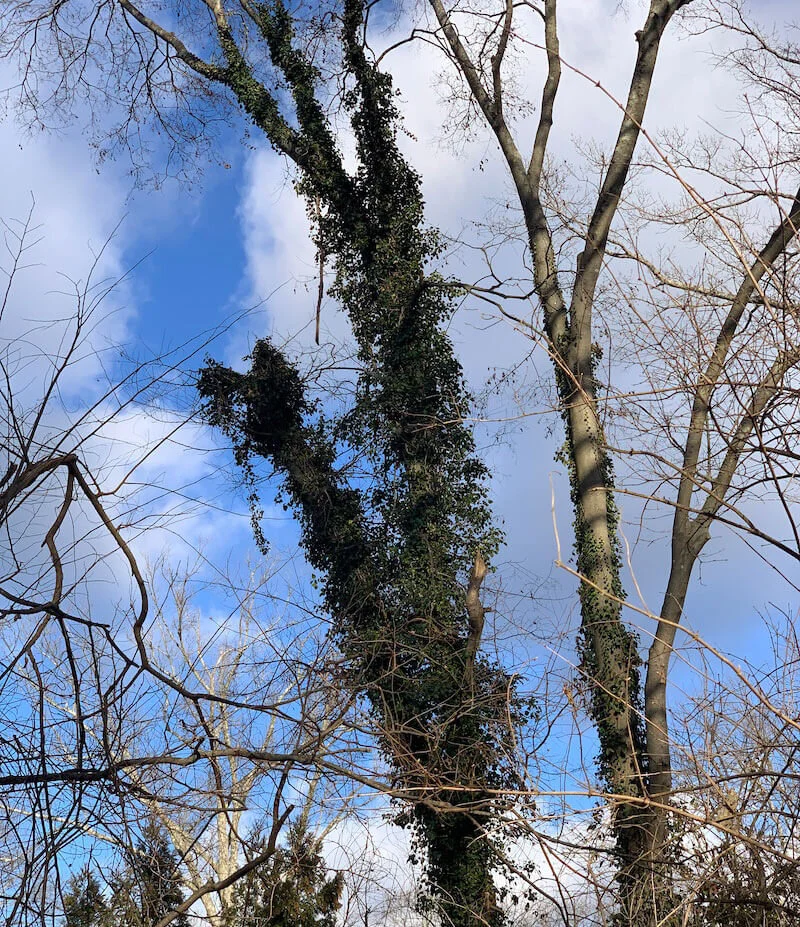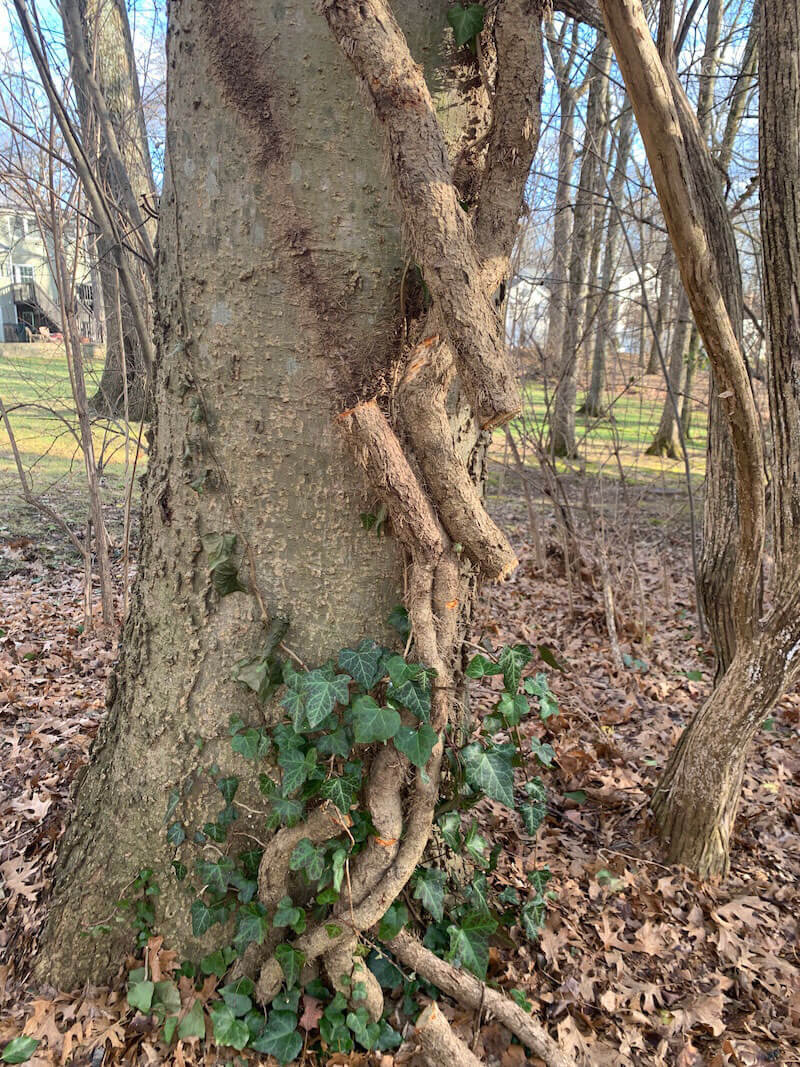A Clingy Menace
Why it’s important to remove vines from your trees
Homeowners are often unsure of what to do about large vines growing on their trees. A couple of small vines near the roots shouldn’t be a problem, but when a trunk and branches are covered in climbing vines, it can be harmful to the tree.
As vines grow, they block air and light from reaching the tree.
Most vines are invasive, and are spread by birds who eat berries from vines, then nest in trees. Some vines will grow as hedges, shrubs or groundcover if planted in the open, but if a seed is deposited under a tree, the plant will grab onto the trunk to grow upward. In Nashville, common vines include English Ivy, Virginia Creeper, Poison Ivy and Euonymus, also known as Fortunes Creeper or Winter Creeper. According to Bo Arrington, NTCC board member and arborist with Bartlett Tree Experts, none of these vines are good for trees. Euonymus, however, does the most damage, growing quickly to engulf a tree as fast as it can.
What to Know About Removing Vines from Trees
When vines get big and spread, they suffocate the tree. Their leaves block air and light from the bark, and the vine’s roots compete with the tree for nutrients in the soil below it. The vines have hairs that clasp onto and attach themselves to the bark, which puts more stress on the tree. These also make it hard to remove the vines, and frequently a crowbar or another tool is needed to pry them off. That’s why arborists, like Bo, recommend removing vines as soon as possible.
People usually want to keep and maintain English Ivy for its aesthetic. It doesn’t grow as fast, and if you trim it back, you can usually keep it without doing extensive damage to your tree. However, like other vines, it will slowly grow over and kill the tree if not properly maintained, so paying close attention is essential. The amount of time it will take to do damage depends on the tree and the type of vine.
A massive growth of vines like this one can suffocate a tree.
How to Get Rid of Vines
Removing Vines
When it comes to how homeowners can keep vines under control, Bo says, “You want to remove as much as possible, in sections of about 6 inches. Cutting in this way will make the vines unable to transport nutrients. When cutting the vines, it’s important to be careful not to damage the bark or the tree’s layers beneath it. The best way to do this is to use pruning shears and clip smaller vines from the tree.” For bigger vines, Bo says that sometimes a handsaw is needed.
When removing vines at home, use gloves when touching the vines. Bo suggests using rubbing alcohol before and after on your hands to help reduce the risk of spreading the vine’s oils and causing irritation to your skin, especially when dealing with Poison Ivy. Winter is the best time to remove Poison Ivy vines, according to Bo. This is because the vines lose their leaves in winter, making them easier to reach and remove with less chance of irritation. However, whenever you notice vines growing on your trees, it’s essential to remove them as soon as possible for your tree’s own good.
Vines must be removed carefully to avoid damaging the tree.
Types of Vines That Grow on Trees
English Ivy is an evergreen, and is more star shaped than others. Euonymus has a round leaf, and Virginia Creeper has leaves that look similar to rose leaves. Poison Ivy looks like Virginia Creeper, but has sets of three leaves, rather than Virginia Creeper’s five. Poison Ivy’s vine is somewhat hairy, and it has white berries, rather than colored ones like some other types do. If you’re uncertain about a plant, or you have vines that are out of control, check with a certified arborist.
Large vines should be severed with pruning shears or a handsaw.
Vines can be good additions to a garden, for food or for their elegant, mature look, when managed properly with a trellis or regular maintenance. Invasive and dangerous vines, though, should be rooted out for the safety of humans, animals and other plants, especially trees. As always, checking with a certified arborist in your area is one of the best ways to know how to best manage vines in your yard.
Want to find out more information about tree care? Subscribe to our newsletter!




